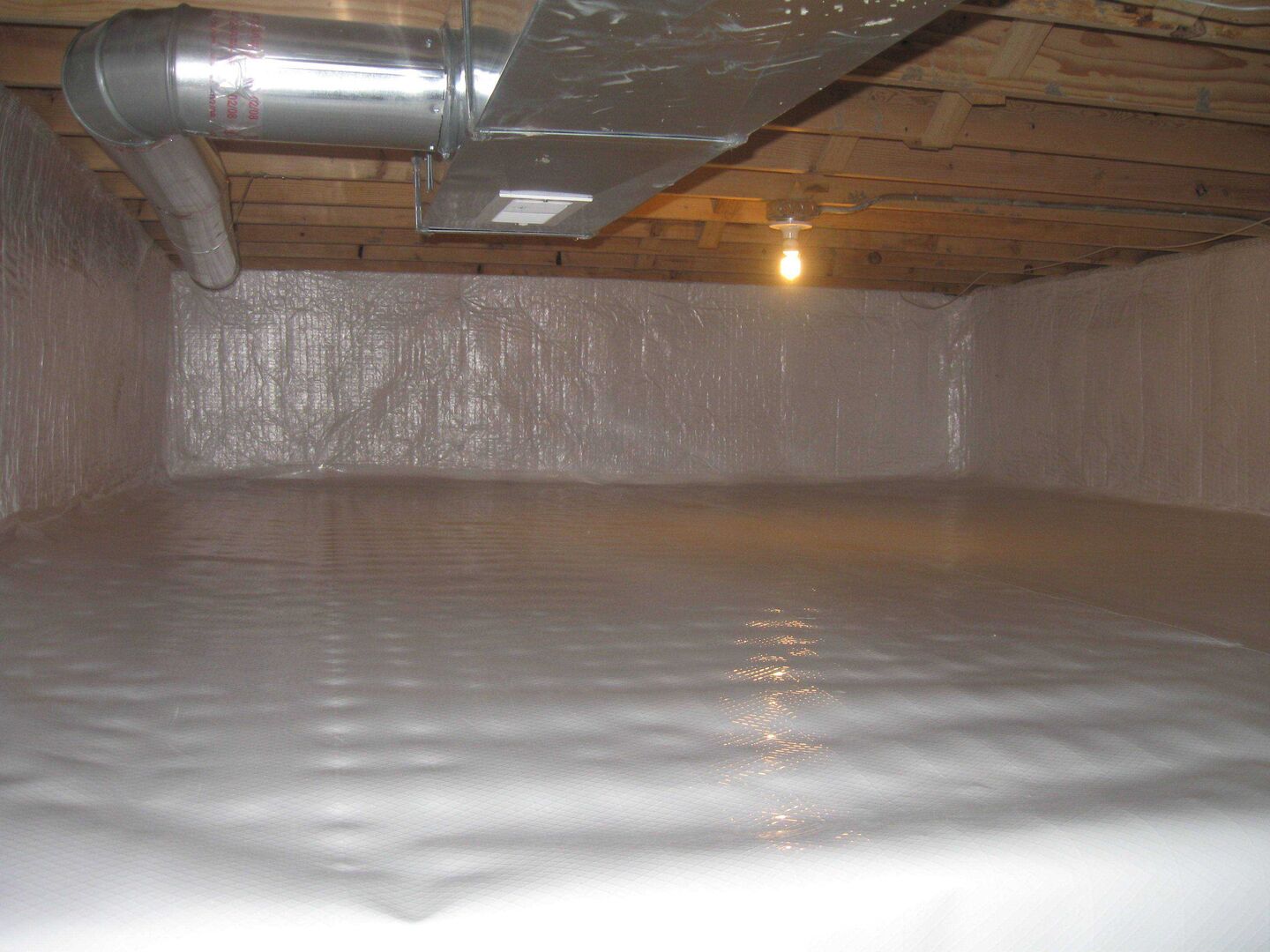Seal a Crawl Space for Utility and Comfort

A crawl space can provide much-needed storage for infrequently used belongings or it can be a black hole – damp, dirty and moldy.
Of course, no one actively chooses the second option for their crawl space but that’s the way many of them end up, especially when they’re not used much or at all. You know, “out of sight, out of mind.”
Regardless of whether a crawl space is used for storage or not, its condition can have a potent effect on a home so it’s always to a homeowner’s advantage to seal it from water.
Why Seal a Crawl Space?
Even when a crawl space isn’t being used, it’s important to prevent it from affecting the rest of the house. A crawl space that is routinely wet or damp can cause any or all of the following problems:
Increased Humidity — Some or all of the water in the crawl space eventually becomes water vapor and water vapor, of course, rises. This can increase humidity in the home above and cause air conditioners and dehumidifiers to work harder.
Damaged Flooring – Another effect of rising water vapor is damage to flooring on the first floor of the home. Solid wood, engineered wood and laminate flooring will all swell and buckle from increased exposure to moisture, leading to expensive and disruptive repairs. The adhesives holding carpet squares or vinyl tiles can deteriorate and the flooring can come loose.
Spread of Mold – Any damp space with organic materials (like framing lumber) present is a breeding ground for mold and a wet crawl space is a perfect example. Spores from the mold in the crawl space often are pulled into living space above by the movement of cool and warm air, causing the potential for allergies and diseases.
Diminished Value – A damp crawl space may not bother a current homeowner but it’s not likely to pass muster with a potential buyer, not to mention a home inspector.
Of course, there’s always the fact that a usable crawl space would provide a clean, dry space for long-term storage or just a place for things that are used seasonally – lawn furniture and holiday decorations come to mind.
How to Seal a Crawl Space
When a crawl space has serious water issues and there are visible signs of seepage, traditional basement waterproofing methods can be employed to prevent water intrusion. A crawl space is, after all, just a short basement.
If dampness is the extent of the problem or after major sources of seepage have been repaired, installing a crawl space encapsulation system will leave the crawl space dry, bright and stabilized for use as storage or just to prevent damage to the home. A typical system will include a heavy-duty polyethylene vapor barrier installed over a dirt floor (Pouring a concrete floor is also an option.) and reflective insulating sheeting covering the walls. The floor and wall coverings are sealed together and the top edge of the wall cover is sealed to the structure, completing the encapsulation.
Regardless of the condition of a home’s crawl space, a homeowner who wishes to seal it, either for use or to protect his or her home will require the advice and assistance of a basement waterproofing contractor with experience in crawl space encapsulation. U.S. Waterproofing has been installing its Comfort Crawl™ encapsulation system in crawl spaces all over the Chicago area for years and has the skills and experience to keep any crawl space or basement dry, comfortable and safe. Why not ask for our free advice?




